DOWNLOAD WHITE PAPER |
There are are a few major components of PCI-DSS that need to be addressed when implementing an external key manager into your data encryption equation. Separation of duties for starters, simply states that those who have access to the sensitive data, such as card holder details or credit card numbers cannot also have access to the encryption keys that protect them. Conversely, the same can be said for the individuals that are responsible for managing data encryption keys -- they should not have access to the sensitive data for which the keys they are creating are used to protect. Quite simply, separation of duties is the concept of dividing critical data protection processes between different individuals. This helps reduce the opportunity and likelihood of fraud when processing sensitive data.
I often talk with companies who've until recently considered encryption key management as an afterthought to their security infrastructure. Often times they would store encryption keys on USB sticks or locally, alongside the encrypted data. This approach allows individuals within the organization access to both the keys and data, directly conflicting separation of duties. Utilizing an external encryption key manager to house your encryption keys, as well as implementing a policy where your security team are the only ones managing those keys and your DBA's and users are the only individuals accessing the data, will help move you in the direction of PCI compliance.
But of course there are other pieces to PCI that one should be aware of when it comes to proper encryption key management. While separation of duties is good practice, there is an additional level of security that can be implemented on the encryption key management side called dual control. Dual control is a process that requires the involvement of two or more individuals to complete a specified task, such as creating a key, changing its attributes, revoking status, or destroying an encryption from use forever. Think of dual control as the act of requiring two individuals with two different keys to unlock the launch codes for a nuclear missile. You certainly wouldn’t want all that responsibility resting on the shoulders of just one person with no oversight in place. The same can be said for the management of your encryption keys.
To implement dual control on Alliance Key Manager (AKM), our encryption key management HSM, you'd first active it in the AKM configuration file of the hardware appliance. Then the two Security Admins responsible for key management would install our Java based admin console into their work environments and configure them to communicate with the key manager over a secure TLS connection. Once this is established, the first Security Admin would authenticate to the key server and set an 'Authorized Administrator' time period. This allows the the first Admin to specify a window of time (in minutes) where the other Admin can log onto the key manager and perform their duties. Taking this approach to key creation and management adds that additional layer of security to your encryption key environment.
In Part II of 'Meeting PCI-DSS Requirements for Key Management' I will discuss the importance of capturing your audit logs and transporting them to a collection server off the key manager device as well as dig into the concept of split knowledge and how AKM meets that requirement. Until then, download our white paper on encryption key management requirements for PCI.

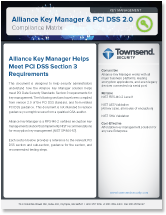

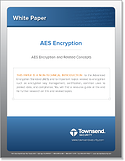

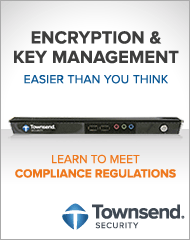
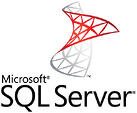 It is important for businesses of all sizes running on SQL servers to encrypt any sensitive data that they store or move. Although business size can determine specific compliance requirements that need to be met, all companies handling sensitive data are vulnerable to the major risk of failing a security audit if their data isn’t properly secured on their SQL servers.
It is important for businesses of all sizes running on SQL servers to encrypt any sensitive data that they store or move. Although business size can determine specific compliance requirements that need to be met, all companies handling sensitive data are vulnerable to the major risk of failing a security audit if their data isn’t properly secured on their SQL servers.
 Many people we talk to are gambling with $7.2 million whether they realize it or not. This week we are at HIMSS12 in Las Vegas meeting members of the IT medical community – an appropriate venue for such high-stakes gambling. How are these people gambling with so much money? The average cost of a data breach is $214 per record, or $7.2 million for an organization. This figure is determined not only by direct costs of a data breach, such as notification and legal defense costs that impact the bottom line for companies, but also indirect costs like lost customer business due to abnormal churn.
Many people we talk to are gambling with $7.2 million whether they realize it or not. This week we are at HIMSS12 in Las Vegas meeting members of the IT medical community – an appropriate venue for such high-stakes gambling. How are these people gambling with so much money? The average cost of a data breach is $214 per record, or $7.2 million for an organization. This figure is determined not only by direct costs of a data breach, such as notification and legal defense costs that impact the bottom line for companies, but also indirect costs like lost customer business due to abnormal churn.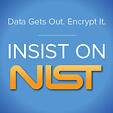 If you aren’t familiar with NIST and FIPS 140-2 certifications, the National Institute of Standards and Technology (NIST) provides them to encryption and key management solutions after they undergo a rigorous testing process. The testing is carried out by independent testing labs who then report the results directly to NIST for validation. Only the most dedicated security vendors are able to pass the tests and achieve NIST and FIPS 140-2 certifications. Not only are these certifications essential for meeting compliance regulations, but they provide you an ease of mind that a third-party has verified the integrity of the product.
If you aren’t familiar with NIST and FIPS 140-2 certifications, the National Institute of Standards and Technology (NIST) provides them to encryption and key management solutions after they undergo a rigorous testing process. The testing is carried out by independent testing labs who then report the results directly to NIST for validation. Only the most dedicated security vendors are able to pass the tests and achieve NIST and FIPS 140-2 certifications. Not only are these certifications essential for meeting compliance regulations, but they provide you an ease of mind that a third-party has verified the integrity of the product. System logging is also important for meeting compliance regulations too, right?
System logging is also important for meeting compliance regulations too, right? 
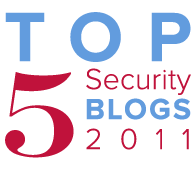 At Townsend, we have a lot of conversations with customers and prospects about data privacy, compliance requirements and best practices for IT security in general. We have written numerous articles on these topics and posted them on our blog. As the end of 2011 quickly approaches, we thought it would be worthwhile to list out our most read articles of the year.
At Townsend, we have a lot of conversations with customers and prospects about data privacy, compliance requirements and best practices for IT security in general. We have written numerous articles on these topics and posted them on our blog. As the end of 2011 quickly approaches, we thought it would be worthwhile to list out our most read articles of the year. 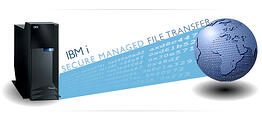

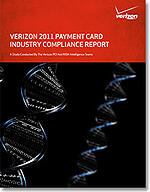

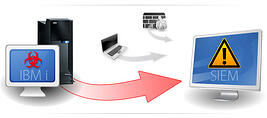 As “The Encryption Company,” we often blog about meeting PCI DSS with encryption and key management. Our NIST-certified technologies will help your organization satisfy Section 3 of PCI DSS, as well as other privacy regulations. But there is another section of PCI DSS that Townsend Security can help you with – Section 10.
As “The Encryption Company,” we often blog about meeting PCI DSS with encryption and key management. Our NIST-certified technologies will help your organization satisfy Section 3 of PCI DSS, as well as other privacy regulations. But there is another section of PCI DSS that Townsend Security can help you with – Section 10.